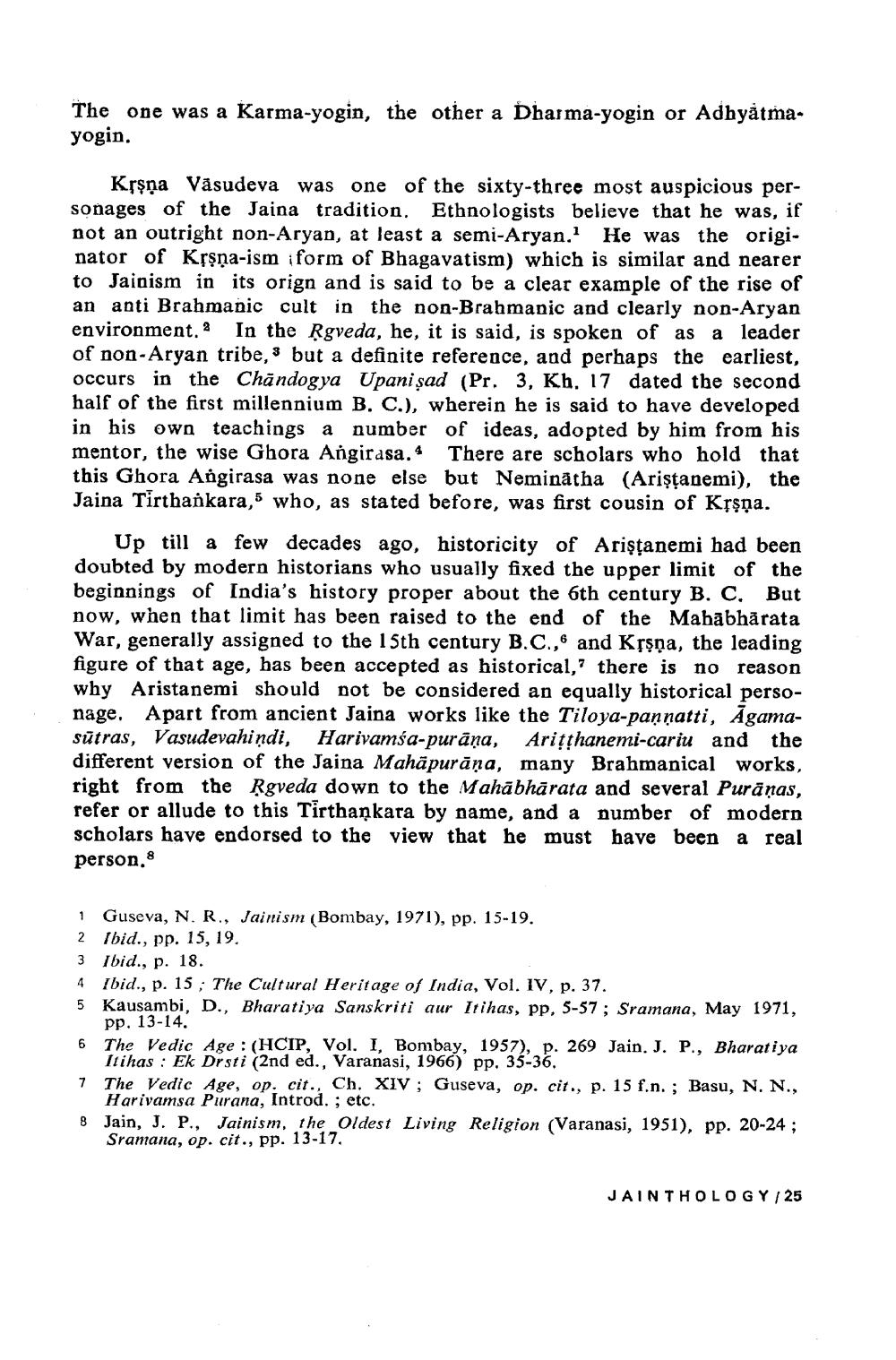________________
The one was a Karma-yogin, the other a Dharma-yogin or Adhyâtmayogin.
Krşņa Vasudeva was one of the sixty-three most auspicious personages of the Jaina tradition. Ethnologists believe that he was, if not an outright non-Aryan, at least a semi-Aryan. He was the originator of Krşņa-ism form of Bhagavatism) which is similar and nearer to Jainism in its orign and is said to be a clear example of the rise of an anti Brahmanic cult in the non-Brahmanic and clearly non-Aryan environment. In the Rgveda, he, it is said, is spoken of as a leader of non-Aryan tribe, 3 but a definite reference, and perhaps the earliest, occurs in the Chăndogya Upani şad (Pr. 3, Kh. 17 dated the second half of the first millennium B. C.), wherein he is said to have developed in his own teachings a number of ideas, adopted by him from his mentor, the wise Ghora Angirasa. There are scholars who hold that this Ghora Angirasa was none else but Neminátha (Ariştanemi), the Jaina Tirthankara,5 who, as stated before, was first cousin of Krşņa.
Up till a few decades ago, historicity of Ariştanemi had been doubted by modern historians who usually fixed the upper limit of the beginnings of India's history proper about the 6th century B. C. But now, when that limit has been raised to the end of the Mahābhārata War, generally assigned to the 15th century B.C., and Krşņa, the leading figure of that age, has been accepted as historical,' there is no reason why Aristanemi should not be considered an equally historical personage. Apart from ancient Jaina works like the Tiloya-pannatti, Agamasūtras, Vasudevahindi, Harivamśa-purāņa, Aritthanemi-cariu and the different version of the Jaina Mahāpurāņa, many Brahmanical works, right from the Rgveda down to the Mahābhārata and several Purāņas, refer or allude to this Tirthankara by name, and a number of modern scholars have endorsed to the view that he must have been a real person. 8
1 Guseva, N. R., Jainism (Bombay, 1971), pp. 15-19. 2 Ibid., pp. 15, 19. 3 Ibid., p. 18. 4 Ibid., p. 15; The Cultural Heritage of India, Vol. IV, p. 37. 5 Kausambi, D., Bharatiya Sanskriti aur Itihas, pp, 5-57 ; Sramana, May 1971,
pp. 13-14. 6 The Vedic Age : (HCIP, Vol. I, Bombay, 1957), p. 269 Jain. J. P., Bharatiya
Itihas : Ek Drsti (2nd ed., Varanasi, 1966) pp. 35-36. 7 The Vedic Age, op. cit., Ch. XIV; Guseva, op. cit., p. 15 f.n.; Basu, N. N.,
Harivamsa Purana, Introd.; etc. 8 Jain, J. P., Jainism, the Oldest Living Religion (Varanasi, 1951), pp. 20-24;
Sramana, op. cit., pp. 13-17.
JAINTHOLOGY/25




